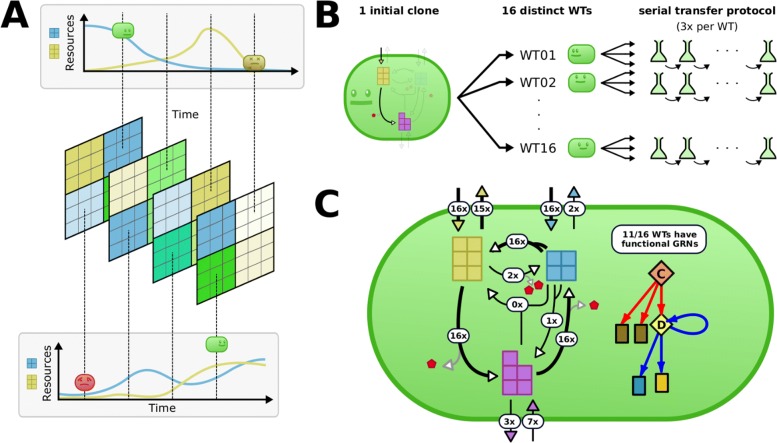Fig. 2.
Evolution of Virtual “wild types” under naturally unpredictable and fluctuating resource conditions. a Natural evolution is mimicked by (harsly) fluctuating resource conditions, resulting in a wide variety of resource conditions. The (actual) grid is 40x40, with four 20x20 subspaces where the rates of influx vary stochastically. These subspaces do not impede diffusion of metabolites or reproduction. The fluctuations of the A and C resource (blue and yellow respectively) are independent, resulting in a variety of different conditions. b We repeat the evolution in natural conditions 16 times starting from the same (minimally viable) initial clone (varying the mutations that happen) yielding 16 distinct WTs. These WTs are later transfered to a serial transfer protocol. c In the white labels we show how many of the evolved WTs adapted to use particular reactions. The thicker arrows represent the shared core genome which consists of two resource importers, a metabolic cycle, and a C-exporter (yellow). Transcription factors (diamonds) were always present across WTs, but only 11/16 WTs visibly display changes in gene expression correlated with changes in the environment

